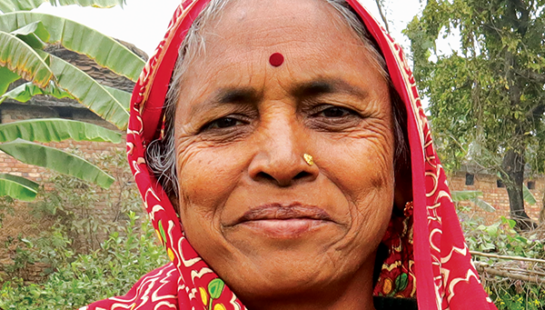He is born in the middle of a power play. For centuries, war ravages the land to build an empire. Then, in a precarious moment of peace, all people are ordered to return home for a census, to be counted, to be taxed. To feed an emperor’s greed.
A Promise Amidst Poverty
A young man and his pregnant betrothed walk for days, across rocky terrain and dangerous roads to a once-obscure town. Aching, sweaty and especially dangerous for a young woman with child, the two hold on to each other. And to a promise.
They don’t have much else. Not even a place to stay when they arrive. So they accept—as those who are displaced must—what shelter they can find, what help they are offered, a makeshift bed of straw and a trough.
How can the hope of a child be born amidst so little? Or a mother’s pain turn to joy among such poverty? How can a father’s heart find home in a place like this?
But the promise is born, and the weary world rejoices.
The Promise Lives in a Broken World
It is not long, though, before peace is shattered. Again. Children are murdered, refugees go into hiding and emperors find new wars. Famine strikes. Storms batter. Power battles rage.
The promised boy grows amongst such brokenness. And as a man, he loves others who are born as he was: vulnerable, poor, marginalised. He seeks them out. He heals their pain. He feeds them and he invites those without a home to live with him.
Until this man, once a babe wrapped in swaddling cloths, is wrongly accused, murdered. He becomes a corpse, covered with burial clothes. The promise is placed in a tomb. Emperors gloat. Followers despair.
But there is no place for him in the inn. Or in death. Because the promise of hope cannot be displaced, nor can it be buried.
Jesus, our Christmas hope, cannot be confined to a manger, to a time 2,000 years ago, in a town we call Bethlehem, to parents we know as Joseph and Mary. Nor to a garden outside Golgotha, in a locked room or on a beach with his disciples those 40 days after his death.
The Light That Shines Through The Darkness
His death and resurrection breathe new life, new hope, into every broken situation.
Yes, he lives whenever a friend in Uganda feeds her family with vegetables from her new garden.
He shines in each child’s face who knows they belong because of a youth club in Nepal.
He breathes new life into women who’ve joined savings groups in Cambodia for their small businesses.
And he dwells in the clothing factories of Bangladesh where workers are treated fairly, in the fields of Kenya where crops have multiplied, in the hospitals of PNG where life and health have been restored.
The joy of every longing heart, the promise of hope, bursts through the brokenness all year long and proclaims, ‘I live!’



 Heather Keith,
Heather Keith,

 Steve Woods
Steve Woods